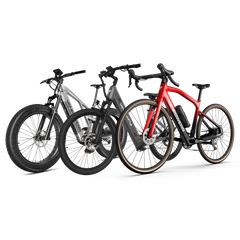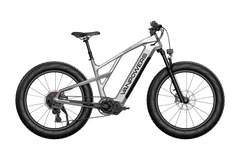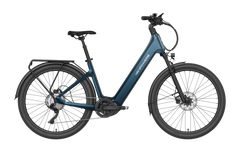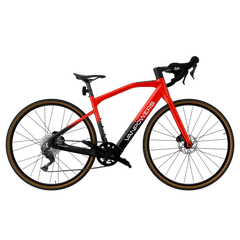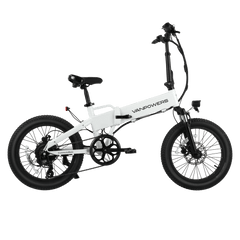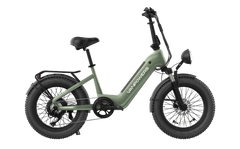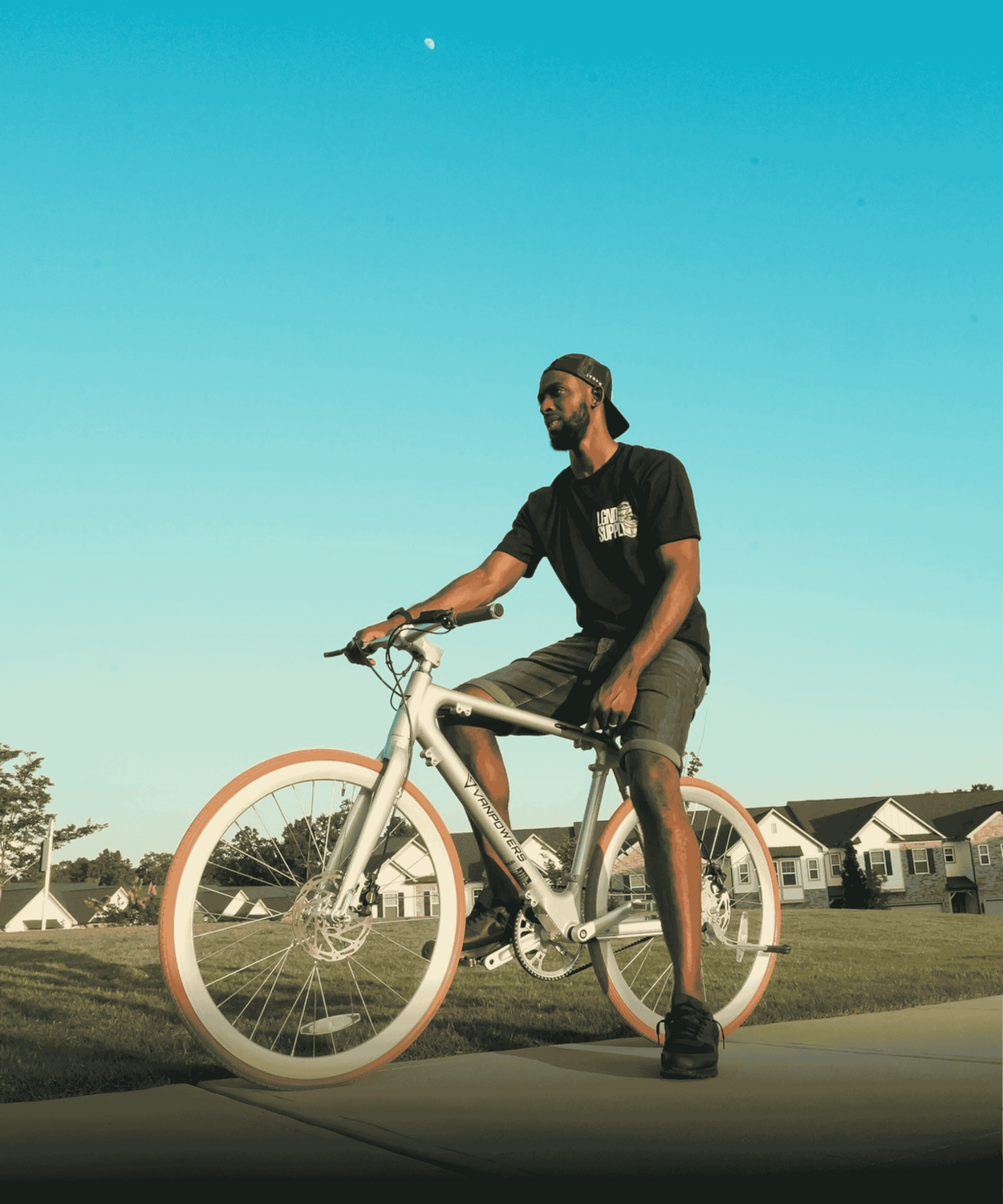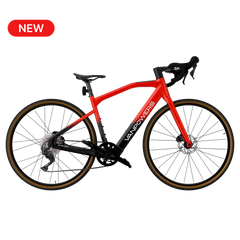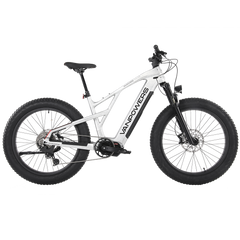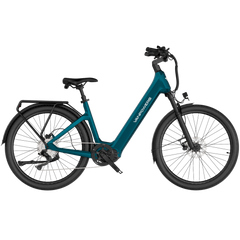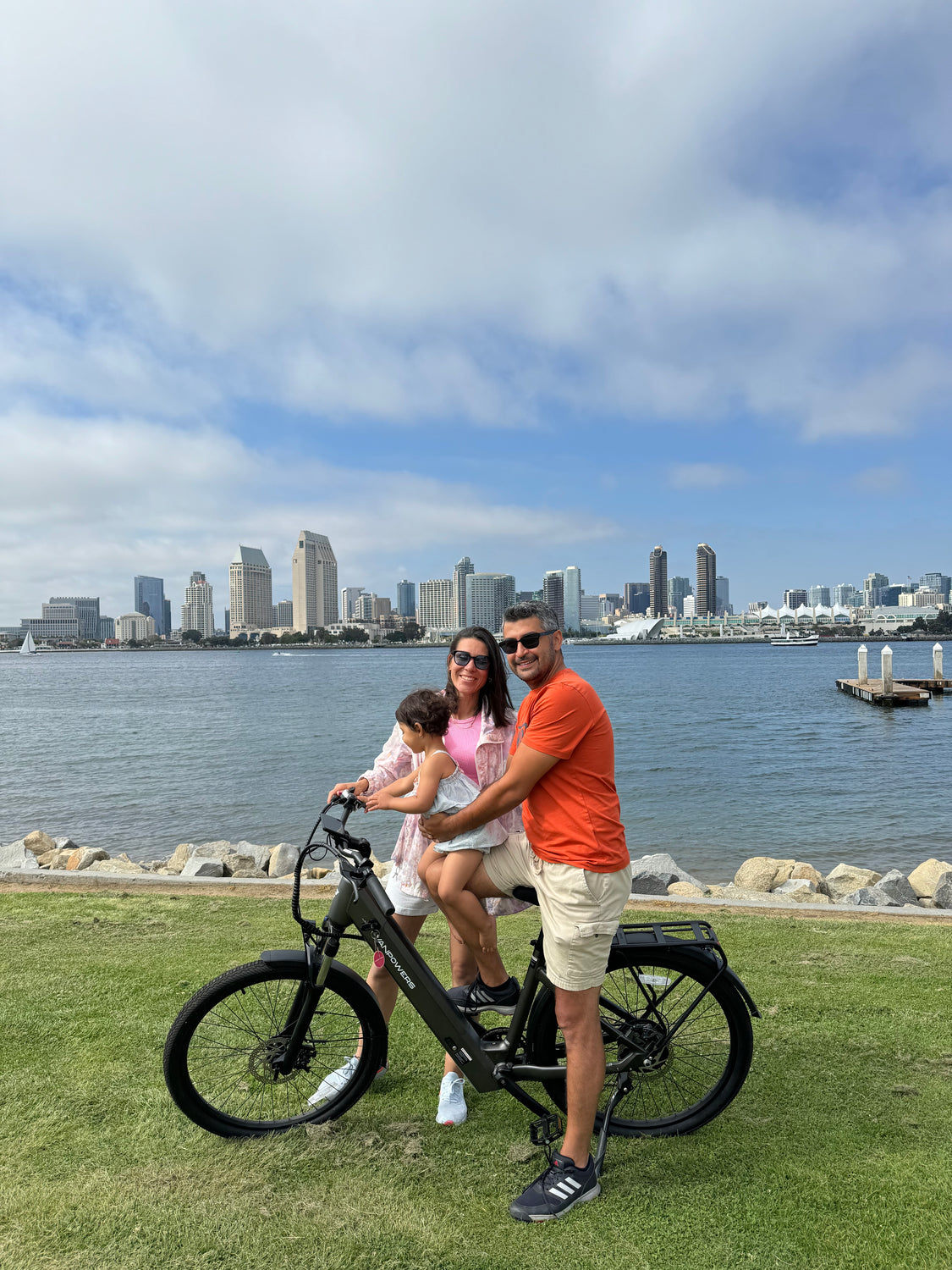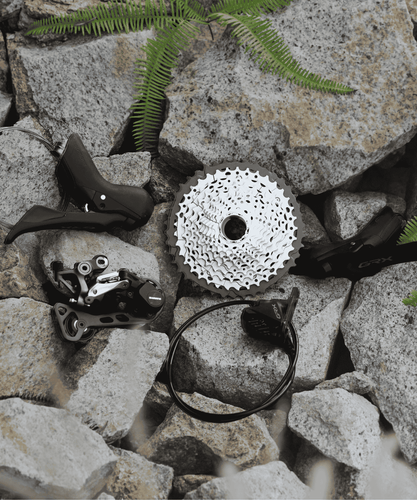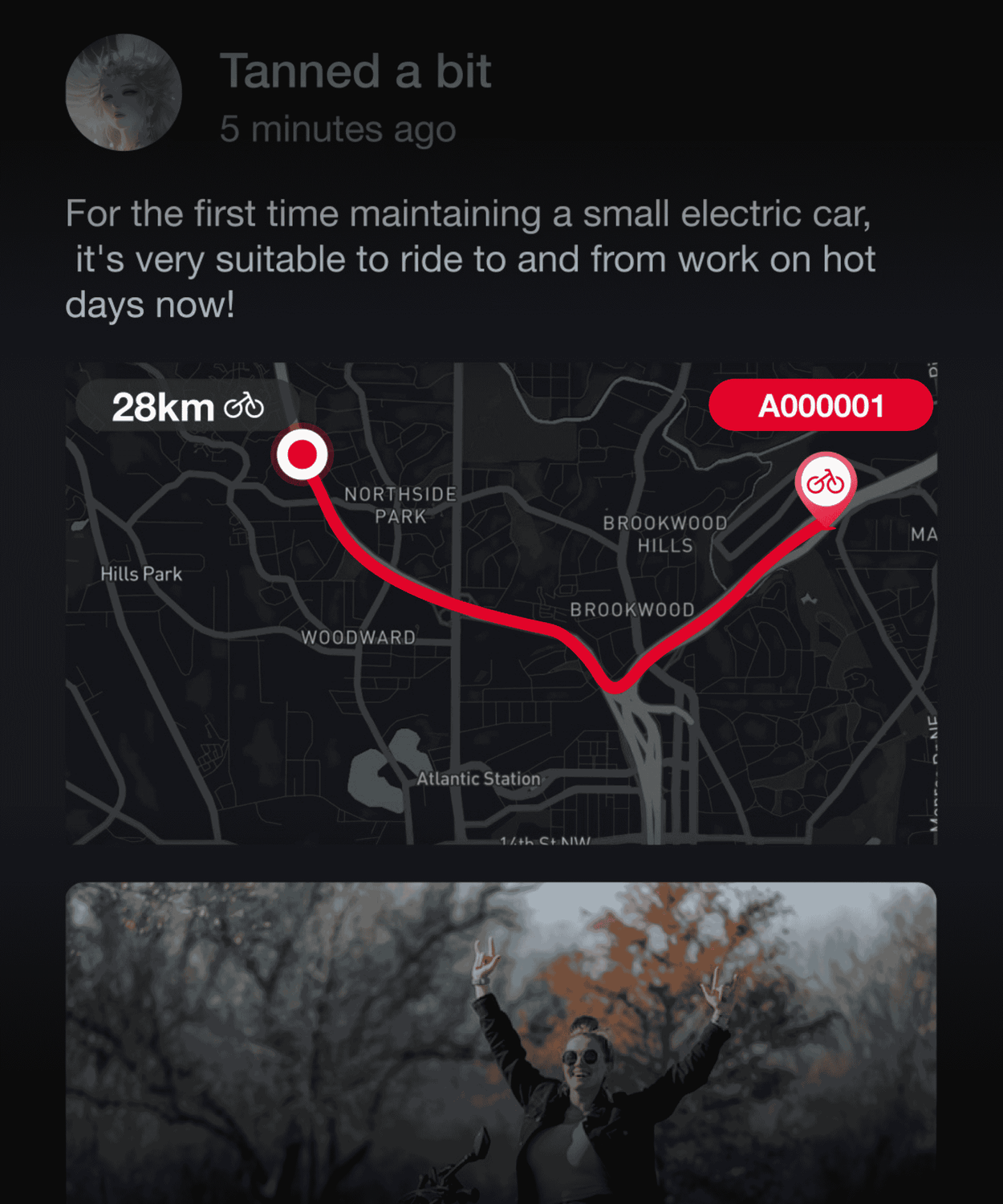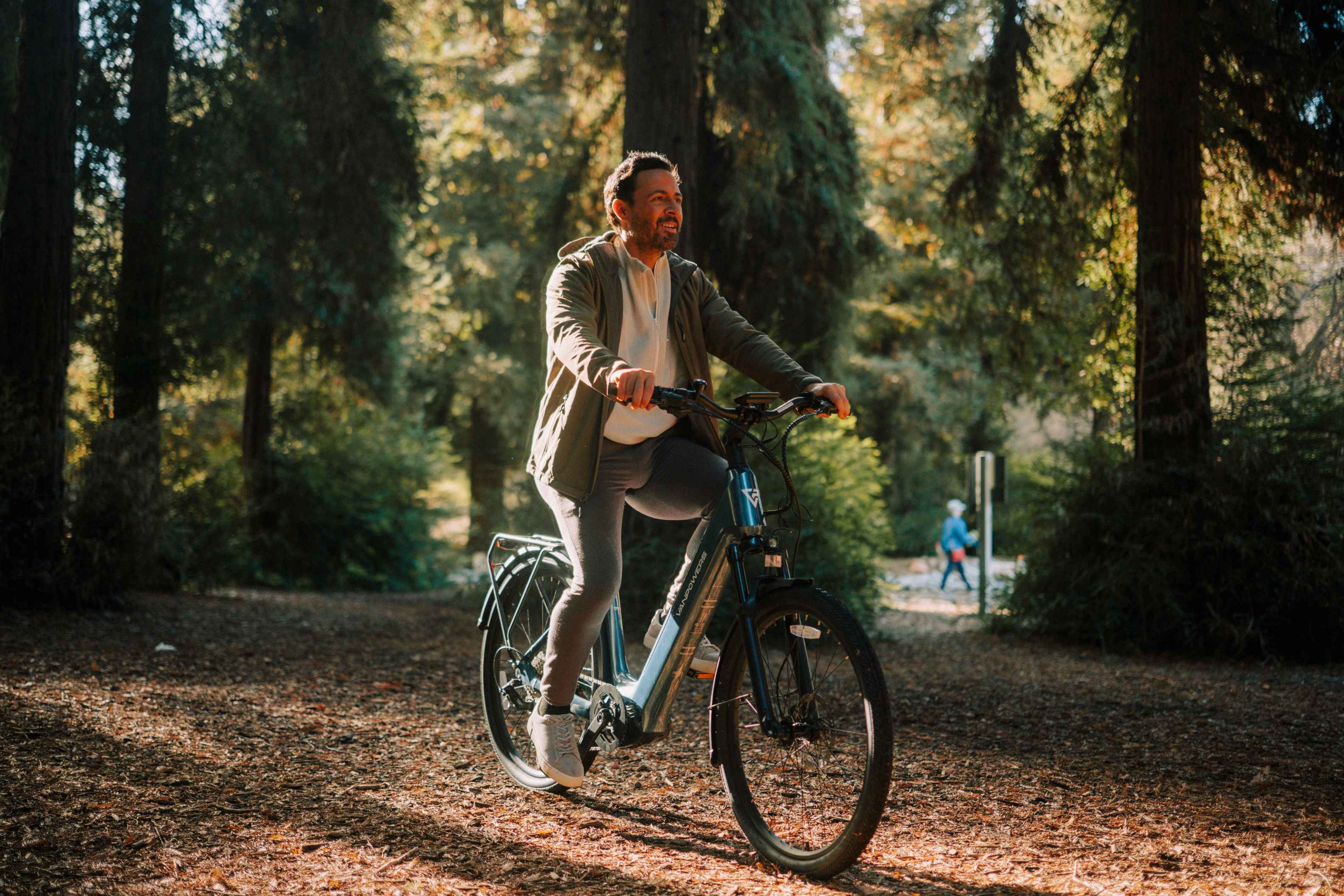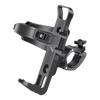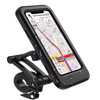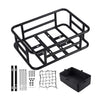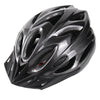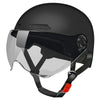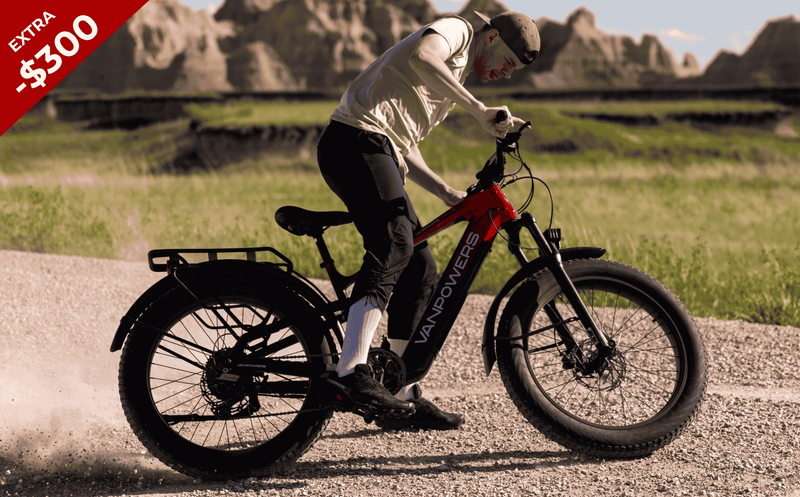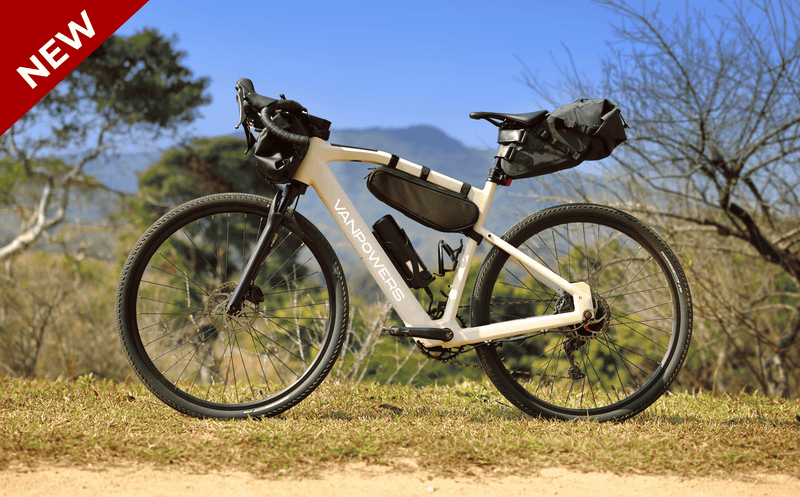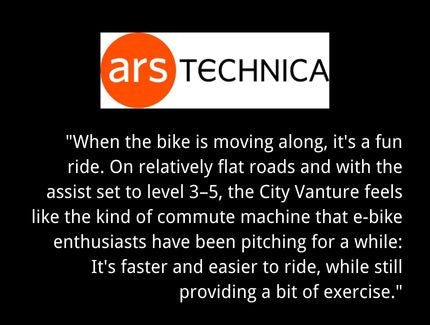
No hay muchas bicicletas eléctricas como ésta, en parte porque puedes construirla tú mismo.

Una bicicleta "urbana" puede tener muchos significados. Puede ser barata, lo que reduce la angustia cuando, casi inevitablemente, la roban. Puede ser sencilla, con menos marchas y accesorios, ya que los trayectos son cortos y relativamente planos. O quizás sea una bicicleta más ligera, más fácil de subir a la acera o por las escaleras del apartamento o la oficina.
City Vanture de Vanpowers Es barata y ligera, solo en comparación con otras bicicletas eléctricas (completamente ensamblada, cuesta $1,750), pero su transmisión por correa, buje interno y asistencia de cinco niveles la hacen bastante sencilla. También presenta limitaciones por la falta de soportes para accesorios y una configuración de engranajes y motor que dificulta arrancar y parar frecuentemente en el tráfico o subir cuestas empinadas. Para el tipo de ciclista adecuado, podría ser una buena opción. Pero conviene analizar detenidamente la City Vanture antes de elegirla para tus desplazamientos urbanos o por senderos.
Ah, y puedes construirla tú mismo si quieres ahorrarte algo de dinero. Esta bicicleta es un conjunto de tubos entrelazados unidos mediante una construcción de caja y espiga y collarines. Unes los tubos, pasas los cables por ellos, atornillas todo lo demás y colocas las ruedas. Hablaremos más sobre esto en breve.
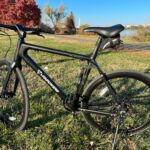 | El City Vanture haciendo su versión todoterreno: a unos metros del Mount Vernon Trail en Gravelly Point en Washington, DC. |
 | La pantalla del manillar del City Vanture, que muestra el nivel de batería, la velocidad, el kilometraje (recorrido y total) y el nivel de potencia (con un poco de estilo LCARS). |
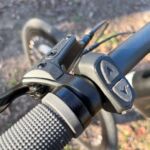 | Los controles superior/inferior en el manillar izquierdo para ajustar la asistencia del motor. |
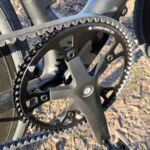 | El plato del City Vanture, solo que con correa en lugar de cadena. |
 | El buje trasero del City Vanture. Si compras la versión "hazlo tú mismo", tendrás que alinearlo todo tú mismo. |
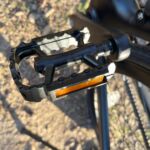 | Pedalea en la City Vanture. |
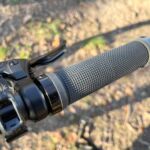 | Detalle del manillar de la City Vanture. |
La bicicleta
La City Vanture viene en una sola talla: un cuadro de 53 cm (21 pulgadas) con acceso directo y un peso de 15 kg. La altura ideal del ciclista está entre 1,72 m y 1,90 m. John Timmer, editor científico de Ars, mide 1,88 m y la Vanture le quedó pequeña para su complexión de piernas largas. "Siento las rodillas hasta las orejas", comentó Timmer tras un paseo informal de 15 minutos. Yo también mido 1,88 m y sentí el pedaleo en los hombros y los músculos del torso más que en bicicletas más adecuadas para mi altura. La experiencia con las proporciones corporales puede variar, pero te recomiendo tener cuidado si eres alto. (Puedes consultar más especificaciones en la sección Geometría de la página del producto). Un representante de Vanpowers dijo que la compañía está trabajando para ofrecer más tamaños de modelos en el futuro.
Al comprar la City Vanture, solo tienes dos opciones principales: el color y si prefieres armarla tú mismo para ahorrar $90 o que te la envíen prácticamente preensamblada. Yo opté por hacerlo tú mismo. Las opciones de color son los relativamente sobrios "Plata Infinito" y "Negro Brillante", los bicolores "Azul Tiza" y "Rubí", y el morado/rosa/aguamarina/algas "Morado Neón", que te hará ver a kilómetros de distancia."
Tu única opción es añadir accesorios: un portabultos trasero personalizado, una bolsa para el cuadro, una bocina antirrobo y una batería adicional tipo bidón con autonomía extendida. Si estabas considerando un portabultos trasero para esta bicicleta, deberías comprarlo en Vanpowers. Debido a su montaje y a la falta de puntos de montaje tradicionales para accesorios (ni siquiera tiene tornillos para el portabidones), no estoy seguro de que los portabultos de otros fabricantes coincidan con el tamaño y la ubicación de los tornillos de la City Vanture. Además, hay muy poco espacio libre por encima de las ruedas, y Vanpowers no ofrece guardabarros propios. Las luces se pueden sujetar con correas.
La bicicleta que llega (o que finalmente se fabrica) tiene un motor de 36 voltios y 350 vatios, y una batería fija de 252 vatios-hora fabricada con celdas LG. Ambos se controlan mediante tres botones cerca del manillar izquierdo y una pantalla impermeable montada entre el tubo de dirección y el manillar. Vanpowers indica que la velocidad máxima de asistencia es de 40 km/h y la autonomía estándar, de 80 km (50 millas), o 130 km (80 millas) con la batería de botella. Estas cifras parecen correctas; recorrí 70 km antes de que la pantalla mostrara una o dos barras restantes de cinco, alternando entre asistencia baja y alta.
El motor funciona con un sensor de cadencia que se activa cuando las bielas de los pedales empiezan a girar, en lugar de generar fuerza. Esta opción, sumada a la combinación de engranajes de buje y motor, es mi principal queja sobre esta bicicleta. Hablaré más sobre esto en breve.
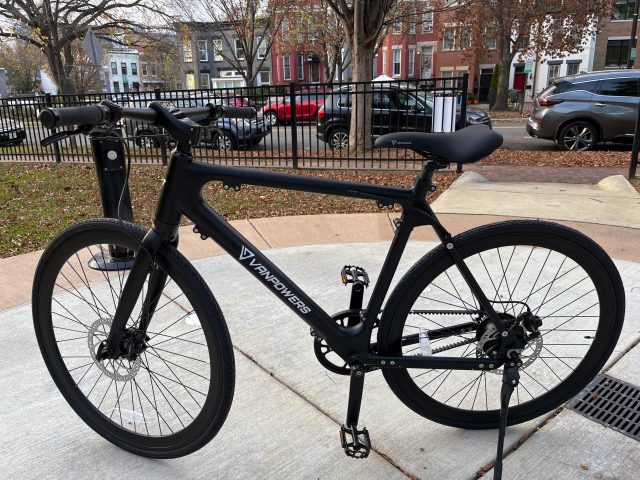
El viaje
La City Vanture no tiene acelerador, no hay marchas que cambiar y apenas hay ajustes ni opciones que configurar. Solo hay pedales, un odómetro y botones en el manillar para cambiar entre los niveles de asistencia del uno al cinco: Eco, Normal, Tour, Power y Boost (más "off").
A diferencia de los niveles de potencia, el desarrollo de esta bicicleta no cambia. Con 63 dientes en el plato delantero y 22 en el piñón trasero/interno, tendría una relación de transmisión de 2.86 si fuera una configuración tradicional de cadena y dientes. Eso es bastante duro para una bicicleta de carretera. conjunto de engranajes típicoY es bastante difícil en la escala de la bicicleta de montaña. Un cassette y un piñón de carbono accionados por correa no son lo mismo que un plato y pueden ser más eficientes.Aunque sea un poco). De todas formas, esta bicicleta requiere más par para ponerse en marcha que una típica bicicleta de una sola velocidad no eléctrica o cualquier bicicleta con transmisión por correa y engranajes. Un punto de comparación es mi bicicleta multiusos. Norco Indie IGH A8 2018Tiene una relación de transmisión de 50 a 24 (2,04) y ocho velocidades, y mi yo de 200 libras puede moverlo desde cero con menos esfuerzo del que requiere el City Vanture.
Parece que la City Vanture no está diseñada para usarse mucho sin al menos un poco de asistencia eléctrica activada. Incluso con la asistencia activada, el sensor tarda un instante en registrar que has empezado a pedalear, y entonces el motor empieza a funcionar. En bicicletas eléctricas con acelerador, sensor de par o simplemente marchas, esto no supone un gran problema. En la City Vanture, hay que esforzarse un poco antes de que la bicicleta te ayude.
Una vez, subiendo la empinada colina que rodea el lado norte del Capitolio de los Estados Unidos, el motor de la City Vanture dejó de funcionar. Empecé la subida con dos de las cinco barras de batería encendidas tras un largo recorrido, pero a medida que avanzaba, la lectura bajó a una barra y luego a ninguna. Me detuve y subí la bici caminando hasta el último tramo; el nivel de batería y la asistencia volvieron. Vanpowers me informó que el rendimiento del motor "a veces se ve afectado por las condiciones de la carretera, el viento y el peso del ciclista" y que "la capacidad de asistencia de una bici de una sola velocidad varía en zonas con mucha pendiente". No experimenté este problema al subir cuestas más suaves con más batería.
Cuando la bicicleta está en movimiento, es un paseo divertido.En carreteras relativamente planas y con la asistencia configurada en los niveles 3-5, la City Vanture se siente como el tipo de máquina de desplazamientos diarios que los entusiastas de las bicicletas eléctricas han estado promocionando durante un tiempo: es más rápida y fácil de manejar, a la vez que proporciona un poco de ejercicio. Al conducir la City Vanture por el carril bici protegido de Pennsylvania Avenue en el noroeste de Washington, D.C., sentí su valor. Nunca arrancas ni vas tan rápido como lo harías en una bicicleta eléctrica controlada por acelerador (en la mayoría de mis recorridos con esta bicicleta, rara vez superé los 29 km/h), pero no tienes que pensar mucho mientras conduces. Presionas el botón hacia arriba para más asistencia, hacia abajo para menos, y simplemente conduces. No tengo ninguna queja sobre los frenos de disco hidráulicos (Tektro), las ruedas o neumáticos, el manillar ni la mayoría de los componentes típicos. La bicicleta se ve, se siente y se maneja como una confiable bicicleta de una sola velocidad, aparte de las diferencias en su transmisión.
Llevé la City Vanture en algunos recorridos urbanos de 5 millas, así como en algunos recorridos más largos, tanto en senderos como en un paseo para un ciclista caídoDe un suburbio de Maryland de regreso a Washington D. C. Recibí varios elogios por la City Vanture en ese viaje. Media docena de ciclistas me comentaron, sin que yo se lo pidiera, que mi bicicleta se veía elegante, que no habrían imaginado que era una bicicleta eléctrica y que admiraban la pantalla integrada. Durante el recorrido, apenas sentía que pedaleaba. Las bicicletas eléctricas suelen ser silenciosas, pero la City Vanture lo es aún más gracias a su transmisión por correa.
La City Vanture parece la bicicleta eléctrica menos "eléctrica" que he visto. Su batería interna se carga a través de un puerto en el tubo superior, aunque no se puede quitar (al menos no sin desmontarla por completo). Los cables, en su mayoría internos, no delatan gran cosa. A menos que alguien busque "Vanpowers" o observe con atención la rueda trasera, no es fácil identificarla como una bicicleta eléctrica. Sin embargo, no es tan moderna, elegante ni eléctrica como para parecerlo. un Van MoofEsa estética discreta puede resultar atractiva para ciertos ciclistas.
Construyendo la Ciudad Vanture
Soy hábil con el montaje y la reparación de bicicletas, así que le pedí a Vanpowers que me enviara la versión "monta tú mismo" de la City Vanture. El manual tiene algunas partes confusas. Fundamentalmente, exige repetidamente que uses una llave dinamométrica (una de 0 a 60 nm) para apretar cada tornillo por seguridad, además de proporcionar llaves hexagonales manuales para cada paso. Parece una especie de guiño, o simplemente una especie de excusa legal. (Vanpowers escribió: "El problema de la llave hexagonal es algo que estamos intentando resolver" cuando pregunté sobre esto).
Me llevó unas cuatro horas armar la City Vanture en tres noches. Podría haberme ahorrado al menos 30 minutos si hubiera instalado la trabilla del cinturón correctamente la primera vez, en la complicada conexión interior/exterior que debe rodear la vaina. Tampoco me fiaba de lo bien ajustado que encajaba todo el conjunto de dirección/horquilla, así que lo volví a armar, pero el resultado fue prácticamente el mismo. Desgasté dos tornillos del cuadro de la bicicleta, ya que intenté mantener el par de apriete especificado, pero solo tenía a mano una llave de media pulgada demasiado grande y convertidores de 3/8. Y el freno de disco trasero, que se monta uno mismo, requirió algunos ajustes ligeros para evitar que rozara.
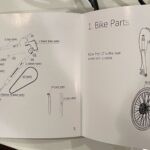 | Una vista de las piezas que ensamblarás para construir el City Vanture. |
 | Cork, el gato, examina el trabajo realizado hasta el momento, con el triángulo central del marco construido. |
 | Una mirada de cerca a las piezas del City Vanture uniéndose en lo que Vanpowers describe como una antigua estructura de mortaja y espiga. |
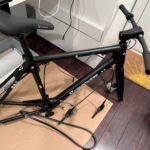 | Después de aproximadamente una hora y media, ya tenía esta bicicleta. |
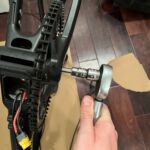 | Usando una llave dinamométrica de 1/2 pulgada con un adaptador de 3/8 de pulgada para intentar cumplir con las especificaciones de apriete del manual. |
Es una rara sensación de nerviosismo subirse a un montón de piezas que moldeaste con tu propia voluntad. Pero decenas de kilómetros después, mi City Vanture funcionaba bien y se sentía sólida. Los únicos ajustes que tuve que hacer fueron el ángulo y la tija del sillín; les puse un poco de aceite para eliminar un pequeño chirrido y facilitar el ajuste. El ahorro de $90 por el modelo casero me compensa, ya que encuentro que la mecánica de bicicletas es una forma relajante de escapar del trabajo en la computadora, pero la mayoría de la gente prefiere pagar el precio completo para empezar a usarla antes.
¿Quién es el conductor ideal de City Vanture?
El City Vanture parece ser el mejor modelo para alguien que:
- Mide entre 5 pies 8 pulgadas y 6 pies de alto.
- Se desplaza principalmente por calles urbanas más planas o senderos no peligrosos, idealmente con tramos largos entre paradas.
- Tiene la potencia en las piernas para empezar desde cero en marchas más difíciles.
- No quiere ni necesita espacio de carga, guardabarros ni luces integradas.
- Prefiere una correa de bajo mantenimiento y un cubo interno a cadenas y casetes reemplazables
- Valora una apariencia de bicicleta eléctrica elegante y muy discreta
- Puede guardar la bicicleta en un lugar donde también se pueda cargar.
- Quiere una bicicleta eléctrica (relativamente) más ligera y de tamaño completo que, ocasionalmente, pueda subirse por algunas escaleras.
En $1,750 Para la bicicleta completamente ensamblada, la City Vanture es una de las bicicletas eléctricas más asequibles (aunque no precisamente económicas) que hemos probado, especialmente entre los modelos que no están pensados para carga. Sin embargo, la mayoría de las demás bicicletas eléctricas con el mismo estilo tradicional ofrecen mucha más versatilidad en cuanto a marchas, accesorios (tanto antes como después de realizar el pedido), tamaños, opciones de carga y potencia para ascensos. Estás pagando por una bicicleta muy aerodinámica, de bajo mantenimiento y atractiva, que pesa menos (4,5-7 kg) que la mayoría.
Si lo único que buscas de tu bicicleta es que sea más rápida y fácil de conducir, la City Vanture podría ser ideal. Pero resulta que hay muchos matices en lo que hace que una bicicleta urbana sea buena.
Imagen de la lista de Kevin Purdy
Facebook: @Vanpowers_bike
YouTube: VanpowersBike
Reddit: Bicicleta Vanpowers
Gorjeo: @Vanpowers.bike
Instagram: @vanpowers.bikes
FUENTE:https://arstechnica.com/
Most Popular
- VanPowers Urbanglide-Pro Revisión de bicicleta electrónica: comodidad y rango sobresalientes
- VanPowers Urbanglide Ultra Review, 2023
- VanPowers Urban Glide - Paso elegante y sexy a través de los viajeros
- Celebrando el Día Mundial sin automóviles con bicicletas eléctricas
- VanPowers & Atb Bike
- Revisión: VanPowers Urbanglide Ultra


